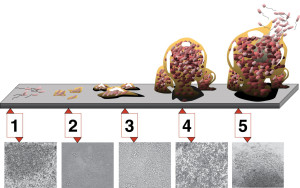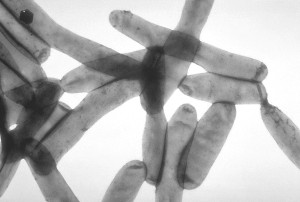
By Connie Sue Centrella
The annual World Aquatic Health Conference (WAHC) brings together a variety of new science-based ideas and technologies. Those who attend the symposia always leave with new found concepts and sciences to improve their knowledge. This past conference, held in Indianapolis, Ind., in October, James Amburgey, PhD, with the University of North Carolina at Charlotte presented findings from the fifth International Conference on Swimming Pool & Spa (ICSPS), held in early 2013 at the University of Rome. His discussion peaked a lot of people’s interest with regards to a shift in microbial focus internationally—that is, away from just traditional recreational water illnesses (RWIs). While Cryptosporidium, Giardia, and Escherichia coli O157:H7 (E-coli) (fecal-related illnesses) continue to be serious health issues and incidences are on the rise, a new spotlight is now on Pseudomonas aeruginosa (P. aeruginosa) and Legionella pneumophila (L. pneumophila).

These bacterium are harboured in biofilm and are not associated with fecal accidents. Common biofilm can be found growing on the surfaces of pool and hot tub filters, as well as inflatable toys, tubes, pool vacuums, and robotic cleaners, which are stored wet without any disinfection.
These micro-organisms are resistant to standard disinfection processes because the biofilm actually protects the micro-organisms from being destroyed. Biofilm is a collection of microbes living together on a wet surface. Extracellular polysaccharide substance (EPS) is the slimy goo which encases the organisms and anchors them to a surface. If there is a wet surface, there is the potential for biofilm (see figure 1).
Pseudomonas aeruginosa

Transmission of RWIs can occur through ingestion (drinking contaminated water), dermal (through the skin), or breathing in mists or vapours. P. aeruginosa is a common bacterium which grows in warm water and is capable of causing skin rashes. Although it is often referred to as ‘hot tub rash,’ it can also be found on people who use swimming pools. These rashes range from small itchy red bumps to larger blisters like poison ivy. Some of the risk factors include: the length of time in contact with the bacterium; the type of swimsuit; exceeding the maximum bather load; and individual tolerances to the bacterium.
There is evidence the concentration of disinfectant affects its growth. Damp areas such as decks, benches, and drains also provide growth conditions. Maintaining normal disinfection levels (1 parts per million [ppm] to 5 ppm of chlorine) has proven to curb the growth of P. aeruginosa. If the concentration falls below the ideal ranges, evidence proves these bacteria can spread.
Legionella pneumophila


In addition to this rash, pathogens may be released from the biofilm into the air causing respiratory diseases like L. pneumophila. Legionellosis (Legionnaires’ disease) is found naturally in warm water environments; therefore, it can be established (trapped) in biofilm. Poor operation and inadequate chemical maintenance contribute to the growth of L. pneumophila. If this pathogen is inhaled in or near the pool or hot tub water surface, or through misters, the effects can be quite serious, sometimes causing death. Symptoms of this disease are high fever, chills, and a cough. People with weak immune systems may be predisposed to this disease.
Outbreaks have been linked to poorly maintained hot tubs and spray/mist features such as interactive water features and fountains. In 2012, the National Swimming Pool Foundation (NSPF) issued a strong warning regarding various indicators that legionellosis outbreaks are possible. They include:
- History of inadequate disinfectant: If the disinfectant level is not maintained any bacteria that are introduced into the system will begin to grow very rapidly and form excessive amounts of biofilm. Once biofilm forms it provides a habitat for L. pneumophila, which may be introduced with the next addition of makeup water. Hot tubs that lack automated testing and feed systems are particularly vulnerable.
- Slime: Hot tubs are not supposed to have any detectable amount of slime. Nearly every continuously moist surface develops some biofilm. In well managed systems, the amount of biofilm is limited and should not be readily detectable during a routine operational examination. Slime in hot tubs is quite often biofilm.
- Excessive and persistent foam: This usually indicates a high level of organics in the water. The organics reduce disinfectant efficacy and may also provide nutrients for the bacteria.
- Musty odours: These are most often associated with fungal growth, not L. pneumophila, but the odour still indicates high levels of microbes are growing.
- Inability to maintain sanitizer level due to high organic buildup: High organic levels make maintaining the disinfectant difficult.
- Cloudy or off-coloured water.
- Strong halogen smell—high level of halogenated disinfection byproducts: Excessive chlorine-type smells indicate a high level of halogenated disinfection byproducts. These are undesirable and indicate the water needs to be oxidized or replaced.
- Patron complaints: This should never be the first indication of an issue. When complaints are noted they must be addressed promptly and thoroughly.






